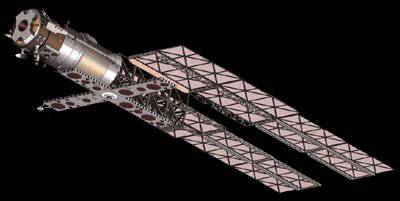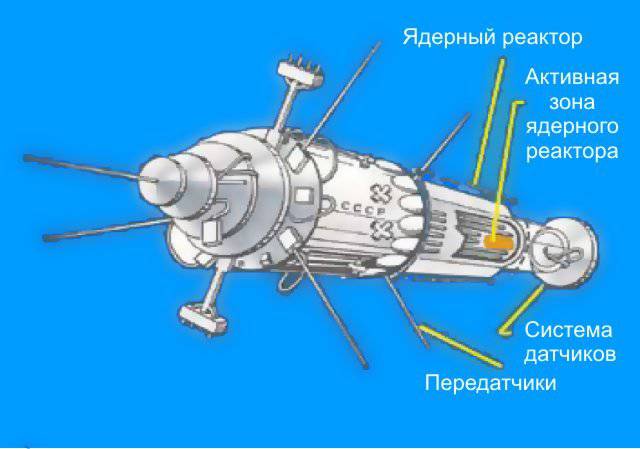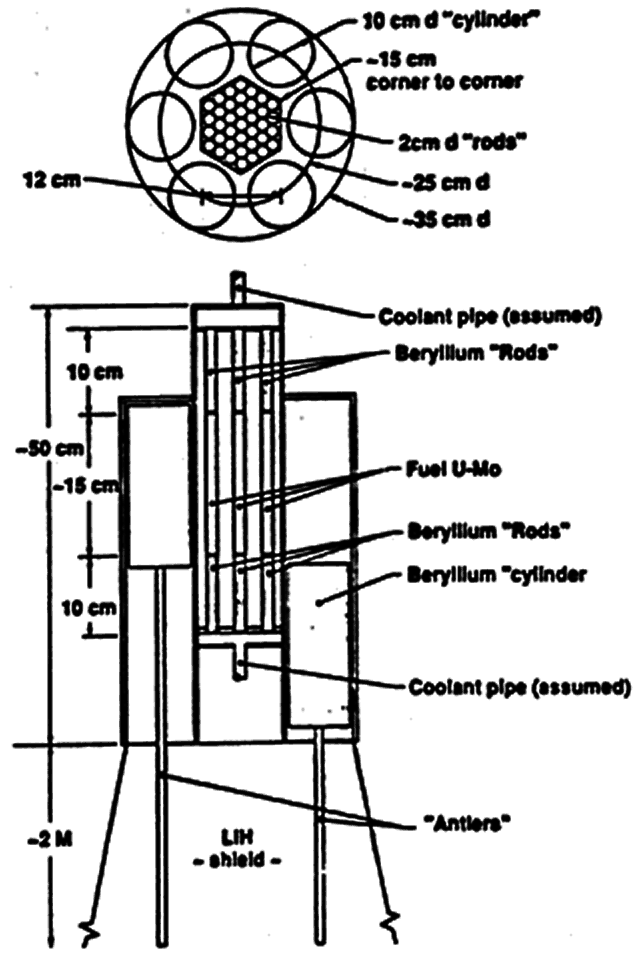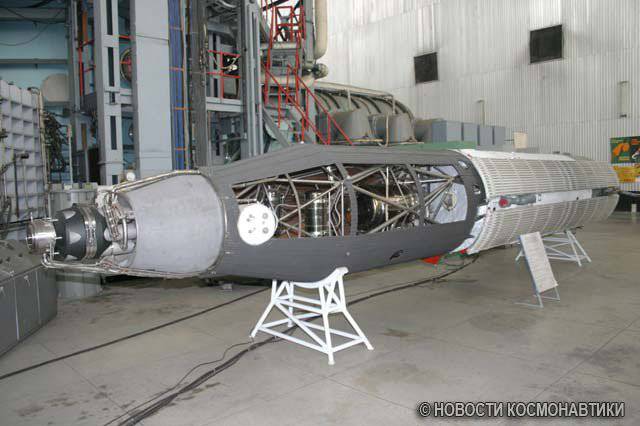Maritime Space Intelligence and Targeting System

One of the conditions that ensured the successful offensive of the German army in the summer of 1941, was the fact that the Wehrmacht was a decade superior to the Red Army in terms of the quality of army intelligence, guidance, communications and command and control systems. The Soviet leadership learned a brutal lesson in time - when planning supplies for Lend-Lease, much attention was paid to improving the quality of command of the Red Army. As a result, the Red Army received 177900 telephones and 2 a million kilometers of field telephone cable. Thanks to the supply of 400-watt radio stations, army headquarters and airfields were fully provided with communications. In total, during the war years, the Soviet Union received 23777 units of army radio stations of various capacities. To ensure reliable communication between the Stavka and the major cities of the USSR, 200 high-frequency telephone stations were received. The delivery of electronic detection systems was a particularly important area: until the 1945 of the year, the USSR received radar types of various types from the allies. In fairness it should be noted that the Soviet Union was able to independently master the mass production of the most complex technology - during the war years, the Red Army received 2000 domestic radars.
Modern military art makes high-quality intelligence, uninterrupted communication and accurate target designation the basis of any military operation. Recent events in Yugoslavia, Iraq, Libya have demonstrated the correctness of this approach - NATO creates a kind of “information dome” over the combat area, within which it controls all movements and negotiations of opponents, disclosing their plans and selecting the most important goals. The result is predictable: entire states are erased from the face of the Earth with single losses from the Coalition. To ensure such an approach, both global satellite reconnaissance systems and local means, including manned and unmanned reconnaissance aircraft, electronic reconnaissance equipment, early warning radar aircraft, are used ... Feedback is excellent: during the battle, an order from the Pentagon can be achieved in a short time bring up the individual soldier.
Such a long preamble was needed in order for you to be able to imagine the importance for the Soviet Union of the development of the Maritime Space Intelligence and Targeting System.
Legend
In 60, industry science and industry were given the task of creating the world's first space-based all-weather surveillance system for surface targets in the entire ocean area with data transfer directly to land or ship command centers called the Legend. The prerequisite for the creation of the MKRTS was the search for a reliable method of targeting and targeting cruise missiles at the US aircraft carrier strike groups, which in those years were the main enemy of the Soviet Navy. The AUG itself, being a powerful percussion device combining deeply echeloned air defense and anti-aircraft defense, could travel a day to 600 nautical miles (more than 1000 km), which made them an extremely complex goal. The presence of numerous escorts and a false order in the AUG additionally set before our sailors the problem of target selection. The result was a complex problem with several unknowns that could not be solved using conventional methods.
Despite the presence of submarines in the USSR Navy (nuclear submarines pr. 675, pr. 661 Anchar, submarines pr. 671), missile cruisers, coastal systems of anti-ship missiles, numerous fleet missile boats, as well as the numerous complexes of anti-ship missiles P-6, P-35, P-70, P-500, there was no certainty about the guaranteed defeat of the AUG in the event of a similar problem. Special combat units could not correct the situation - the problem was reliable over-the-horizon detection of targets, their selection and providing accurate target designation for flying cruise missiles. Using aviation to guide the RCC, the problem did not solve: the ship's helicopter had limited capabilities, moreover, it was extremely vulnerable to carrier-based aviation of a potential enemy. Despite its excellent inclinations, the Tu-95RC scout was ineffective - it took many hours for an airplane to arrive in a given area of the World Ocean, and again the scout became an easy target for deck interceptors. Such an inevitable factor as weather conditions completely undermined the confidence of the Soviet military in the proposed target designation system based on a helicopter and a reconnaissance aircraft. There was only one way out - to monitor the situation in the oceans from the icy abyss of outer space.
The largest research centers and design teams of the country, in particular, the Physics and Energy Institute and the Institute of Atomic Energy named after. I.V. Kurchatov. The calculations of the parameters of the orbits and the mutual arrangement of the spacecraft were performed with the direct participation of Academician M.V. Keldysh. The design office of V.N. was appointed as the head organization responsible for the creation of the MKRTS. Chelomey. The OKB-670 team (Krasnaya Zvezda Scientific and Production Association) took on the development of a nuclear onboard power plant for spacecraft.
At the beginning of 1970, the Arsenal plant (Leningrad) launched the production of prototype spacecraft. The flight tests of the spacecraft of the radar reconnaissance began in the 1973 year, and the radio reconnaissance satellite - a year later. The radar reconnaissance spacecraft was put into service in 1975, and the entire complex (with the radio intelligence reconnaissance spacecraft) later in the 1978. In 1983, the last component of the system was adopted - the P-700 supersonic anti-ship missile Granit.
1982 had a great chance to check the MKRTS in action. During the Falkland War, data from space satellites allowed the command of the Soviet Navy to track the operational and tactical situation in the South Atlantic, accurately calculate the actions of the British fleet and even predict the time and place of landing in the Falklands of the English landing force.
Technical aspects of the program
Technically, the MKRTS is a combination of two types of spacecraft and ship information receiving points directly from orbit, ensuring its processing and issuing target designation to the rocket arms.

The first type of satellite US-P (Managed Satellite - Passive, index GRAU 17Ф17), is a complex of electronic intelligence, designed to detect and direction-finding objects that have electromagnetic radiation. The spacecraft has a high-precision three-axis system of orientation and stabilization in space. The power source is a solar battery, in combination with a chemical battery. A multifunctional liquid-propellant rocket launcher provides stabilization of a spacecraft and correction of the height of its orbit. For the withdrawal of the spacecraft into Earth orbit, the Cyclone booster is used. The mass of the spacecraft is 3300 kg, the average height of the working orbit is 400 km, the inclination of the orbit is 65 °.

The second type of satellite US-A (Managed Satellite - Active, GRAU index 17Ф16) was equipped with two-way side-looking radar, providing all-weather and all-day detection of surface targets. Low working orbit (which eliminated the use of bulky solar panels) and the need for a powerful and uninterrupted power source (solar batteries could not work on the shadow side of the Earth) determined the type of on-board power source - BUC-5 “Buk” nuclear reactor, thermal power 100 kW ( electrical power - 3 kW, estimated operating time - 1080 hours).
The mass of the spacecraft is more than 4 tons, of which 1250 kg accounted for the reactor. US-A had a cylindrical shape with a length of 10 meters and a diameter of 1,3 meters. On one side of the hull was located the reactor, on the other - the radar. The reactor had protection only from the radar, so the hellish satellite was a permanent source of radiation. After the completion of the work, a special upper stage brought the reactor to the “burial orbit” at an altitude of 750 ... 1000 km from the surface of the Earth, the rest of the satellite burned when it fell in the atmosphere. According to calculations, the residence time of objects in such orbits is at least 250 years.
Russian roulette
18 September 1977 was successfully launched from Baikonur spacecraft "Kosmos-954", which is nothing more than an active satellite of the Legend International Center for Air Rocket Communications. Orbit parameters: perigee - 259 km, apogee - 277 km, orbit inclination - 65 degrees.
For a whole month, Cosmos-954 vigilantly kept watch in space orbit, paired with its twin Cosmos-252. October 28 The satellite 1977 suddenly ceased to be controlled by ground control services. The reason is still unclear, most likely a malfunction in the software of the corrective propulsion system. All attempts to orient the satellite to success did not lead. It was also not possible to put it into the “burial orbit”.
At the beginning of January 1978, the depressurization of the instrument compartment of the spacecraft occurred; the Cosmos-954 completely failed and stopped responding to requests from Earth. An uncontrolled descent of a satellite with a nuclear reactor on board began.
The Western world looked with horror into the dark night sky, expecting to see the falling star of death. Back in November, the NORAD Joint Command of the North American Continental Air Defense made a statement that the Soviet spacecraft had lost its orbit and was a potential threat due to a possible fall to Earth. In January, the 1978 world tabloids came up with the headings "Soviet spy satellite with a nuclear reactor on board is in orbit without control and continues to decline." Everyone was discussing when and where the flying reactor would fall. "Russian Roulette" has begun.

Early in the morning of January 24, Cosmos-954 collapsed over the territory of Canada, filling Alberta province with radioactive debris.
The search operation "Morning Light" (in honor of the bright completion of the satellite career) began. The first object, which is the remainder of the reactor core, was found on January 26. In total, Canadians found more than 100 kg fragments with a total mass of 65 in the form of rods, disks, tubes, and smaller parts, the radioactivity of which was up to 200 X-rays / hour.
Fortunately for Canadians, Alberta is a northern, sparsely populated province, and no one from the local population has been hurt.
Of course, an international scandal happened, the Americans shouted the loudest of all, the USSR paid symbolic compensation and for the next 3s of subsequent years refused to launch US-A, improving the design of the satellite.
However, in 1982, a similar accident occurred on board the Kosmos-1402 satellite. This time the spacecraft safely drowned in the waves of the Atlantic. According to the experts, if the fall had begun on 20 minutes earlier - Cosmos-1402 would have landed in Switzerland.
Fortunately, no more serious accidents with “Russian flying reactors” were recorded. In case of emergency situations, the reactors were separated and transferred without incident to the “burial orbit”.
Results of the program
In total, under the program “Marine Space Intelligence and Targeting System”, 39 launches (including test ones) of US-A radar reconnaissance satellites with nuclear reactors on board were made, of which 27 were successful. Of course, numerous new, not yet tested, often too innovative solutions for the creation of this technology could not but affect the reliability of spacecraft. However, US-A in 80-ies reliably controlled the surface of the situation in the oceans. The last launch of this type of spacecraft took place on March 14 1988 of the year.
Currently, only the US-P radio intelligence satellites are part of the space group of the Russian Federation. The last of these, Cosmos-2421, was launched on 25 on June 2006 of the year. According to official information, there were some minor problems on board due to incomplete disclosure of solar panels. Farther story with "Cosmos-2421" became a source of American slander. Despite numerous statements by the Russian side that everything is in order with the spacecraft, it is in a regular orbit and is in communication with it, representatives of NORAD claim that 14 March 2007 of the year "Cosmos-2421" ceased to exist and collapsed into 300 fragments.

One of the US-P satellites, Cosmos-2326, in addition to specific tasks in the interests of the country's security, performed a purely peaceful function — with the help of the Konus-A module, he explored cosmic gamma-ray bursts.
In general, the Legend MKRTS has become one of the business cards of the Soviet cosmonautics. Many of its components still have no analogues in the world. And most importantly, unlike all the advertised programs of the PIO, it was adopted for service.
Information